Thingiverse
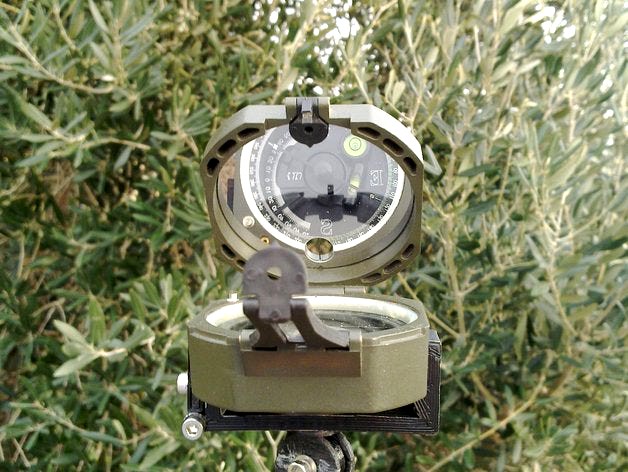
Brunton Pocket Transit - Mount-Head Assembly & Staff Level V3 by Biketool
by Thingiverse
Last crawled date: 2 years, 12 months ago
This mount head set should allow anyone to bring only a pocket transit and this printed mount along in their luggage or pocket, acquire a broom handle or staff of proper length, perhaps some stakes and flagging tape or a can of spray paint to mark where readings are taken, and be able to survey an area with reasonable accuracy anywhere in the world.
I have not found any available unbranded Jacob staff or tripod mount-heads for use with Brunton pocket transits, certainly not at a price appropriate for the inexpensive unbranded transits. This collection is intended to provide someone with most of the parts (except for non-magnetic screws, nuts, and washers) needed to assemble a mount-head assembly for use with a measured staff or broomstick to mount the Brunton for use in determining horizontal angle with the (magnetic declination screw adjustable) magnetic compass as well as to rotate it 90 degrees on this pivoting mount head for use with the internal vertical axis spirit level scale for use as a clinometer to measure the angle up or down to the target or tie-in point. Used with a staff rather than a bullseye bubble levelled tripod, the clinometer readings will always be rough, but I have included a wrap around zip-tie on bullseye two axis bubble level platform to attach to the staff itself for an inexpensive 30mm bubble bullseye stuck down with 3M double sided scotch tape. The bullseye mount slides up and down the staff so you can glance a quick staff level check when taking a clinometer reading. With the bullseye 1-2 degree accurate vertical clinometer readings can be taken without needing to acquire a tripod in keeping with this being a pocket size surveying system requiring only a broomstick be purchased locally. The files currently posted are a v2.5(2.6 adds a bubble leveler for your Jacob staff) of the project and are far stronger than the first files posted to the project. One edit required is to center the hole for the tightness adjust clamp screw by 1mm, I just drilled it out rather than edit and re-print, that is the only edit holding me back from tagging this as finished. In a big re-edit I might either make the clamp's bottom bracket thicker, double or curve it, change the infill %, or just do away with adjustability as I currently just have the clamp at it's tightest setting and just slip the Brunton into the clamp, it is tight enough but bows the bottom of the bracket rather than getting tighter. I am seriously thinking to reprint the bracket (with the holes edited) in PLA and do a lost-PLA aluminum cast. http://makezine.com/projects/guide-to-3d-printing-2014/metal-casting-with-your-3d-printer/ The lower pivot, peg, and staff cup are glued together with glue made from ABS plastic dissolved to goo in hardware/paint store grade acetone(not watered down nail polish remover), I also acetone/ABS goo glued the clamp pivot disk to the upper pivot after trimming all brim and filing trimming everything flat. I found that filing or sanding the tips of the clamp 'teeth'to a squared off edge gave me a far better grip on the Brunton mounting grooves than the rounded ends my 0.5mm extruder tip printer left me with. So far I am happy with calling the basic design final with problems with this model resulting from imperfect infill and temperature settings.
10-8-2016 v3, (as yet unprinted)Added more plastic to the bridge of the transit clip, have some ideas for a stronger v4.
Thoughts on Brunton and inexpensive copy pocket tranists
https://en.wikipedia.org/wiki/Brunton_compass
The Brunton Pocket Transit was designed by and named after David Brunton, a mining engineer in Colorado. The Brunton when used with this head mount set is functionally a non-telescopic pocket sized theodolite combining a magnetic compass and bubble level clinometer to measure horizontal and vertical axis through several several sighting methods using mirror, peep sights, and even sighting out of field of view and pressing the lock button to save a rough heading. Patented in 1894 with main features finalized by 1914 but still in widespread everyday use by engineers, geologists, archaeologists, and surveyors worldwide, it is known as the M2 Engineer's or Artillery Compass to the US military. Years ago Brunton manufacturer William Ainsworth & Sons Inc and when they collapsed the new Brunton Inc changed most models from a non-magnetic metal body to tough ABS plastic. (I am not a lawyer, the next bit is my amateur supposition not in any way a deceleration of fact, an actual practicing attorney in your jurisdiction should be consulted to determine the truth of what follows.) The patents (and name trademark) https://en.wikipedia.org/wiki/Generic_trademark have long expired on this tool so it is possible to find quite inexpensive 100% legal examples made by several manufacturers for as low as $20(US) including international delivery in 2016 which, if carefully tested for calibration before using in the field, can function as well as ones made by the Brunton company costing several hundred $US. There are some decorative rather than fully functional brass and nickel plated examples made in India which are not made to the highest standards, these are not recommended, even in the 1890s Brunton specified the then precious metal aluminum for the lightweight body of his pocket transit. My example of the ~$20 Brunton (seems to be a non watertight functional copy of that sold as the ComPro by Brunton inc) was fully functional, I did have to replace the fragile sighting window wire with a snipped 0.5mm sewing needle, and to bold the scratch sighting line I masked both sides leaving a 0.5mm unmasked strip along the unpainted scratch sighting line with Scotch magic tape and marked the line with a black Sharpie marker.
The next step up for around $50-60 is called the CST/Berger or Harbin Geological Compass DQL-8 and probably others as time goes on, it is compatible with my printed mount head too (these appear to be non-waterproof versions of the standard modern Aluminum Brunton). It is another Brunton expired patent design clone, it has a metal case, the black aiming line applied to the mirror, and inductive needle motion damping, I don't see much advantage to buying a Brunton branded transit over the Harbin one except perhaps ability to have it serviced or re-weighted for southern hemisphere easily at the Brunton inc. factory, though for the price you could get another Harbin if you break it with a DIY fix. The DQL-8 appears to be ready to use without any hacking around vs the $20 transit which has all the vital calibration done and mechanical parts installed but needs some work like the aim line applied to finish it. I much prefer my smooth metal induction damped Harbin pocket transit but functionally you can do most of what you need with a no-name basic plastic Brunton. One important difference is that the Harbin has a place to pop out the retaining wire loop holding the glass to get at the compass needle for re-weighting it with copper wire for use in the southern hemisphere if needed.
The Brunton is great for the many applications it is designed for on tabletop, hand held, with a staff, or tripod for highly portable site surveys, establishing property lines, or registering a claim, geological formation dip and strike measurements, maybe even making a detailed topographical map just to name a few uses for this true engineer's multitool.
If instead you instead need a quick tough compass for shooting azmuths in point-to-point over land movement and then keeping on a heading while walking day or night in any weather, or finding yourself on a map I highly recommend the US Army's lensatic compass or similar sighting compass.
If you got your Brunton without instructions this excellent Brunton manual will give you very complete instructions on how to use your transit in nearly every possible way, I have also attached the .pdf in the attached files. http://www.manualslib.com/manual/219471/Brunton-Transit.htm
Here is a declassified story of a CIA team doing a covert field survey of new American ICBM launch silos back in the early 1960s mostly using tripod mounted Brunton transits and public survey maps. They did this in order to evaluate the risk and potential accuracy of KGB teams doing the same from public roads and fields, mapping and targeting for Soviet ICBMs against those American missiles in their launcher silos. https://www.cia.gov/library/center-for-the-study-of-intelligence/kent-csi/vol11no3/html/v11i3a06p_0001.htm
History and examples of using a Brunton.http://oldtopographer.net/the-topographers-tools/brunton-pocket-transits/
Developed on OpenSCAD, .scad files attached.
Additional Information:https://en.wikipedia.org/wiki/Survey_markerhttps://en.wikipedia.org/wiki/U.S._National_Geodetic_Survey
I have not found any available unbranded Jacob staff or tripod mount-heads for use with Brunton pocket transits, certainly not at a price appropriate for the inexpensive unbranded transits. This collection is intended to provide someone with most of the parts (except for non-magnetic screws, nuts, and washers) needed to assemble a mount-head assembly for use with a measured staff or broomstick to mount the Brunton for use in determining horizontal angle with the (magnetic declination screw adjustable) magnetic compass as well as to rotate it 90 degrees on this pivoting mount head for use with the internal vertical axis spirit level scale for use as a clinometer to measure the angle up or down to the target or tie-in point. Used with a staff rather than a bullseye bubble levelled tripod, the clinometer readings will always be rough, but I have included a wrap around zip-tie on bullseye two axis bubble level platform to attach to the staff itself for an inexpensive 30mm bubble bullseye stuck down with 3M double sided scotch tape. The bullseye mount slides up and down the staff so you can glance a quick staff level check when taking a clinometer reading. With the bullseye 1-2 degree accurate vertical clinometer readings can be taken without needing to acquire a tripod in keeping with this being a pocket size surveying system requiring only a broomstick be purchased locally. The files currently posted are a v2.5(2.6 adds a bubble leveler for your Jacob staff) of the project and are far stronger than the first files posted to the project. One edit required is to center the hole for the tightness adjust clamp screw by 1mm, I just drilled it out rather than edit and re-print, that is the only edit holding me back from tagging this as finished. In a big re-edit I might either make the clamp's bottom bracket thicker, double or curve it, change the infill %, or just do away with adjustability as I currently just have the clamp at it's tightest setting and just slip the Brunton into the clamp, it is tight enough but bows the bottom of the bracket rather than getting tighter. I am seriously thinking to reprint the bracket (with the holes edited) in PLA and do a lost-PLA aluminum cast. http://makezine.com/projects/guide-to-3d-printing-2014/metal-casting-with-your-3d-printer/ The lower pivot, peg, and staff cup are glued together with glue made from ABS plastic dissolved to goo in hardware/paint store grade acetone(not watered down nail polish remover), I also acetone/ABS goo glued the clamp pivot disk to the upper pivot after trimming all brim and filing trimming everything flat. I found that filing or sanding the tips of the clamp 'teeth'to a squared off edge gave me a far better grip on the Brunton mounting grooves than the rounded ends my 0.5mm extruder tip printer left me with. So far I am happy with calling the basic design final with problems with this model resulting from imperfect infill and temperature settings.
10-8-2016 v3, (as yet unprinted)Added more plastic to the bridge of the transit clip, have some ideas for a stronger v4.
Thoughts on Brunton and inexpensive copy pocket tranists
https://en.wikipedia.org/wiki/Brunton_compass
The Brunton Pocket Transit was designed by and named after David Brunton, a mining engineer in Colorado. The Brunton when used with this head mount set is functionally a non-telescopic pocket sized theodolite combining a magnetic compass and bubble level clinometer to measure horizontal and vertical axis through several several sighting methods using mirror, peep sights, and even sighting out of field of view and pressing the lock button to save a rough heading. Patented in 1894 with main features finalized by 1914 but still in widespread everyday use by engineers, geologists, archaeologists, and surveyors worldwide, it is known as the M2 Engineer's or Artillery Compass to the US military. Years ago Brunton manufacturer William Ainsworth & Sons Inc and when they collapsed the new Brunton Inc changed most models from a non-magnetic metal body to tough ABS plastic. (I am not a lawyer, the next bit is my amateur supposition not in any way a deceleration of fact, an actual practicing attorney in your jurisdiction should be consulted to determine the truth of what follows.) The patents (and name trademark) https://en.wikipedia.org/wiki/Generic_trademark have long expired on this tool so it is possible to find quite inexpensive 100% legal examples made by several manufacturers for as low as $20(US) including international delivery in 2016 which, if carefully tested for calibration before using in the field, can function as well as ones made by the Brunton company costing several hundred $US. There are some decorative rather than fully functional brass and nickel plated examples made in India which are not made to the highest standards, these are not recommended, even in the 1890s Brunton specified the then precious metal aluminum for the lightweight body of his pocket transit. My example of the ~$20 Brunton (seems to be a non watertight functional copy of that sold as the ComPro by Brunton inc) was fully functional, I did have to replace the fragile sighting window wire with a snipped 0.5mm sewing needle, and to bold the scratch sighting line I masked both sides leaving a 0.5mm unmasked strip along the unpainted scratch sighting line with Scotch magic tape and marked the line with a black Sharpie marker.
The next step up for around $50-60 is called the CST/Berger or Harbin Geological Compass DQL-8 and probably others as time goes on, it is compatible with my printed mount head too (these appear to be non-waterproof versions of the standard modern Aluminum Brunton). It is another Brunton expired patent design clone, it has a metal case, the black aiming line applied to the mirror, and inductive needle motion damping, I don't see much advantage to buying a Brunton branded transit over the Harbin one except perhaps ability to have it serviced or re-weighted for southern hemisphere easily at the Brunton inc. factory, though for the price you could get another Harbin if you break it with a DIY fix. The DQL-8 appears to be ready to use without any hacking around vs the $20 transit which has all the vital calibration done and mechanical parts installed but needs some work like the aim line applied to finish it. I much prefer my smooth metal induction damped Harbin pocket transit but functionally you can do most of what you need with a no-name basic plastic Brunton. One important difference is that the Harbin has a place to pop out the retaining wire loop holding the glass to get at the compass needle for re-weighting it with copper wire for use in the southern hemisphere if needed.
The Brunton is great for the many applications it is designed for on tabletop, hand held, with a staff, or tripod for highly portable site surveys, establishing property lines, or registering a claim, geological formation dip and strike measurements, maybe even making a detailed topographical map just to name a few uses for this true engineer's multitool.
If instead you instead need a quick tough compass for shooting azmuths in point-to-point over land movement and then keeping on a heading while walking day or night in any weather, or finding yourself on a map I highly recommend the US Army's lensatic compass or similar sighting compass.
If you got your Brunton without instructions this excellent Brunton manual will give you very complete instructions on how to use your transit in nearly every possible way, I have also attached the .pdf in the attached files. http://www.manualslib.com/manual/219471/Brunton-Transit.htm
Here is a declassified story of a CIA team doing a covert field survey of new American ICBM launch silos back in the early 1960s mostly using tripod mounted Brunton transits and public survey maps. They did this in order to evaluate the risk and potential accuracy of KGB teams doing the same from public roads and fields, mapping and targeting for Soviet ICBMs against those American missiles in their launcher silos. https://www.cia.gov/library/center-for-the-study-of-intelligence/kent-csi/vol11no3/html/v11i3a06p_0001.htm
History and examples of using a Brunton.http://oldtopographer.net/the-topographers-tools/brunton-pocket-transits/
Developed on OpenSCAD, .scad files attached.
Additional Information:https://en.wikipedia.org/wiki/Survey_markerhttps://en.wikipedia.org/wiki/U.S._National_Geodetic_Survey
Similar models
thingiverse
free

Leveling bracket for Sirius EQ-G tripod/mount by jggall01
...d hot melt glue to fasten the bracket to the tripod head. i also used hot melt glue to fasten the bullseye level to the bracket.
thingiverse
free

Poor Man's Surveying Hack
... mount which should allow mounting to most tripods but if your tripod head is large, you may need a mini ball head for clearance.
thingiverse
free

Scope Leveler Barrel Clamp by mighty_mace
...of the big box stores to use as a bubble in the clamp. it also uses 1/4x20 bolts and nuts which are molded into the lower clamp.
3dwarehouse
free

Brunton Compass
...brunton compass
3dwarehouse
a brunton compass model #brunton #bussola #compass #geologist #geology
thingiverse
free

Tripod Level by dbbyres
...tem25d0f87519:g:4h8aaoswopryebac:sc:uspsfirstclass!92127!us!-1
superglue works well for attaching the bubble levels to this clip.
grabcad
free

Bullseye bubble level
...bullseye bubble level
grabcad
circular bubble
free3d
free

Survey Level no tripod v1
...survey level no tripod v1
free3d
survey level no tripod v1 printable, low poly model.
thingiverse
free

Clinometer by TheMaKings
...wer clinometer is 100mm or ~4in) and paste it onto the side. to use, look at something, line up the sights, and look at the side.
thingiverse
free

Survey Tripod Adaptor 5/8in to 3-1/2in
... mount it to my survey tripod. i did a little shopping around and i was shocked by the cost of one so i designed and printed one.
3dwarehouse
free

Accupoint Inc
...seco #survey #surveyors #the_gps_store #the_laser_store #topcon #totalstations #tracking #trimble #vehicle_path #vehicle_tracking
Brunton
thingiverse
free

Brunton Compass by geofablab
...brunton compass by geofablab
thingiverse
scanned with the makerbot digitizer desktop 3d scanner
thingiverse
free

Brunton Hydrocore Dual Case by abomb60
...ing tossed in my pack so i figured now was a good time to attempt to design something.
updated and uploaded new v2.9 stl files.
thingiverse
free

Coupler for Gopro Hero 3 to Brunton Echo monocular = airsoft scope-cam by RandyR
... design has been made a little looser, but i haven't been able to try it yet. if you give it a go, let me know how it works.
thingiverse
free

Paragliding compass holder for BRUNTON 58C/E KAYAK COMPASS diameter 76 mm by gojoetofly
...er 76 mm by gojoetofly
thingiverse
the compass link is http://www.brunton.com/collections/navigation/products/mountable-58-kayak
thingiverse
free

Dead MK8 Clamp by shivinteger
...- attribution - share alike [11] thing title : brunton pocket transit - mount-head assembly v2.6 [11] thing url...
grabcad
free

Snowboard stomp pad
...snowboard stomp pad grabcad this is for my brunton snowboard to give optimal grip while in transit between...
3dwarehouse
free

Brunton Compass
...brunton compass
3dwarehouse
a brunton compass model #brunton #bussola #compass #geologist #geology
3dwarehouse
free

Brújula - Brunton
...brújula - brunton
3dwarehouse
brújula tipo brunton
3dwarehouse
free

Geology Compas - Brunton
...geology compas - brunton
3dwarehouse
compas used by geologis
Biketool
thingiverse
free
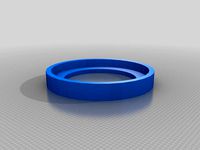
Bezel cover by Biketool
... disguises an expensive watch with some plastic if traveling in a high crime area without reducing the timekeeping functionality.
thingiverse
free

Popcorn Air Popper Measuring/Dump Cup by Biketool
...ol
thingiverse
70mm popcorn dump/measuring cup and cap for a grandix air popper, has pivots and handle tab. made with openscad.
thingiverse
free
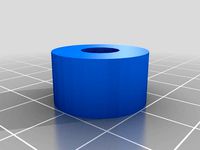
20mm Dishwasher Power Button by Biketool
...ears. the button has a small slot on the back which sticks onto an extension on the switch, view the model to understand better.
thingiverse
free
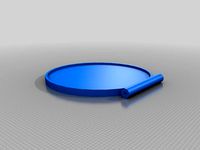
Helmet Mounted Bicycle Mirror by Biketool
...generic mirror mount, more common mirror disc mount for one inch 25.4mm mirror discs, and a stencil for diy cutting mirror discs.
thingiverse
free
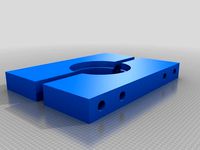
11.5 Ligne Watchmakers Movement Holder by Biketool
...6mm) such as a miyota 85xx movements or a chinese dg28xx/38xx movements so that you have a stable place to do your delicate work.
thingiverse
free
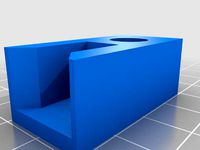
Window Frame Locking Lug by Biketool
...part that is outside the mounting track, now if kids slam it with the locking lugs down i need to realign it, no big deal though.
thingiverse
free
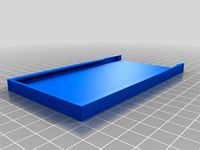
FX-260 Calculator, Slide on Cover by Biketool
...borted a print as my bed was out of allignment, so caveat emptor but more importantly equum dono accipitis ne dentes inspicerent.
thingiverse
free
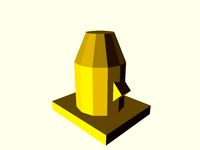
Dash panel gromet (Toyota?) by Biketool
... the abs hot ~255c and at a high enough % to get the layers to stick properly, i also soaked in acetone to strengthen the layers.
thingiverse
free
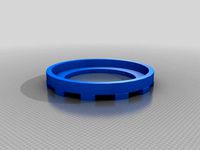
Bezel/Clock Fonts and a 41mm Bezel Cap by Biketool
...30, 35, 40, 45, 50, 55, a round pip, a bar, and a triangle.
attaching an incomplete gen2 watch bezel cap with blank 5min markers.
thingiverse
free

OpenSCAD Fast Predator Head Demo by Biketool
... five lines. not intended for printing.
use thingiview to rotate as thingiverse rendered the model looking away from the viewer.
Staff
turbosquid
$5

God Staff Jax Staff
...d model god staff jax staff for download as max, obj, and fbx on turbosquid: 3d models for games, architecture, videos. (1290684)
turbosquid
$49

Staff
...f
turbosquid
royalty free 3d model staff for download as max on turbosquid: 3d models for games, architecture, videos. (1541991)
turbosquid
$2

Staff
...quid
royalty free 3d model staff for download as fbx and obj on turbosquid: 3d models for games, architecture, videos. (1682366)
3d_export
$5

Staff
...staff
3dexport
turbosquid
$50

Staff
...model staff for download as obj, fbx, blend, and unitypackage on turbosquid: 3d models for games, architecture, videos. (1428381)
turbosquid
$15

staff
... available on turbo squid, the world's leading provider of digital 3d models for visualization, films, television, and games.
turbosquid
$3

Staff
... available on turbo squid, the world's leading provider of digital 3d models for visualization, films, television, and games.
turbosquid
$1

Staff
... available on turbo squid, the world's leading provider of digital 3d models for visualization, films, television, and games.
turbosquid
free

staff
... available on turbo squid, the world's leading provider of digital 3d models for visualization, films, television, and games.
turbosquid
free

Staff
... available on turbo squid, the world's leading provider of digital 3d models for visualization, films, television, and games.
Transit
3d_export
$10

Ford-transit
...ford-transit
3dexport
ford-transit van
turbosquid
$15

Transit Level
...quid
royalty free 3d model transit level for download as max on turbosquid: 3d models for games, architecture, videos. (1158112)
3d_ocean
$25
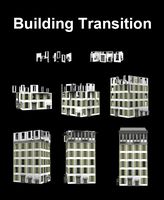
Building Transition
...on.can change all material and add texture. if you want only file .mov download here http://videohive.net/item/building-transi...
3ddd
free
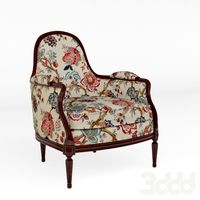
Gillesnouailhac Bergere Transition
... transition
кресло gillesnouailhac bergere transition.
размер l 69 − d 75 − h 97 − sh 42
turbosquid
$80

Transit-Fire
... available on turbo squid, the world's leading provider of digital 3d models for visualization, films, television, and games.
turbosquid
$10

TRANSITION PIPE.JPG
... available on turbo squid, the world's leading provider of digital 3d models for visualization, films, television, and games.
turbosquid
$6

Transit Collection
...ransit collection for download as skp, 3ds, dae, fbx, and obj on turbosquid: 3d models for games, architecture, videos. (1621198)
turbosquid
$4

The transition coil
... available on turbo squid, the world's leading provider of digital 3d models for visualization, films, television, and games.
3ddd
$1
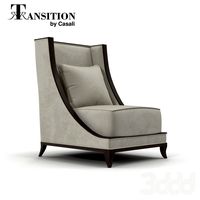
Transition by Casali Armchair
...transition by casali armchair
3ddd
transition , casali
(w хlхh):71 x 88 x 100
3d_export
$20

F0rd Transit
...f0rd transit
3dexport
! some of the used materials are from corona library !
3d_export
$12

pocket stove
...pocket stove
3dexport
pocket stove
3d_ocean
$6

Pocket Watch
...calendar chain clock gear gold golden jewelry luxury old-fashioned pocket pocket watch time watch
pocket watch on a 2009 calendar
3d_export
$5

Pocket Watch
...pocket watch
3dexport
pocket watch old style
3d_ocean
$15

pocket watch
... calendar chain clock gear gold golden jewelry luxury old-fashioned pocket pocket watch time watch
high poly ancient pocket watch
3d_export
$8

Pocket watch
...pocket watch
3dexport
pocket watch with a photo of new york in the 1900s
turbosquid
$5

Pocket flashlight
...uid
royalty free 3d model pocket flashlight for download as on turbosquid: 3d models for games, architecture, videos. (1271804)
3d_export
free

Pocket flashlight
...this is a 3d model of a pocket flashlight. it is quite realistic and you can add this model to your project and enjoy the result.
archive3d
free

Pocket 3D Model
...e3d
bag pocket paper bag
pocket n040608 - 3d model (*.gsm+*.3ds) for interior 3d visualization.
turbosquid
$20

Pocket Watch
...squid
royalty free 3d model pocket watch for download as c4d on turbosquid: 3d models for games, architecture, videos. (1352289)
turbosquid
$5

Pocket Knife
...uid
royalty free 3d model pocket knife for download as blend on turbosquid: 3d models for games, architecture, videos. (1560181)
V3
3d_export
$5

Poison-v3
...poison-v3
3dexport
poison-v3
3ddd
$1
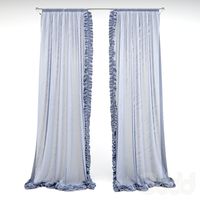
Curtain v3
...curtain v3
3ddd
полупрозрачная штора v3
turbosquid
free
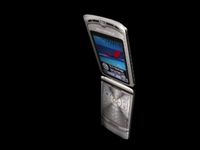
v3
... available on turbo squid, the world's leading provider of digital 3d models for visualization, films, television, and games.
3d_export
$5

potato v3
...potato v3
3dexport
turbosquid
$2

Bitcoin v3
...
royalty free 3d model bitcoin v3 for download as c4d and prj on turbosquid: 3d models for games, architecture, videos. (1182845)
turbosquid
$10
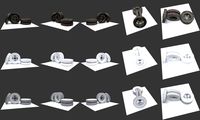
Wheel V3S
...e 3d model wheel v3s for download as 3ds, obj, fbx, and blend on turbosquid: 3d models for games, architecture, videos. (1344250)
turbosquid
$6
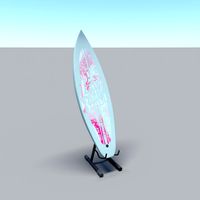
surfboard V3
...e 3d model surfboard v3 for download as ma, max, obj, and fbx on turbosquid: 3d models for games, architecture, videos. (1168641)
turbosquid
$30
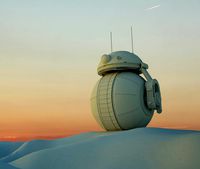
Droid V3
... available on turbo squid, the world's leading provider of digital 3d models for visualization, films, television, and games.
turbosquid
$19

MOTO V3
... available on turbo squid, the world's leading provider of digital 3d models for visualization, films, television, and games.
turbosquid
$10
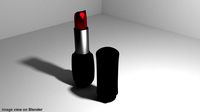
Lipstick v3
... available on turbo squid, the world's leading provider of digital 3d models for visualization, films, television, and games.
Level
design_connected
$11

Levels
...levels
designconnected
one nordic levels computer generated 3d model. designed by form us with love.
design_connected
$7
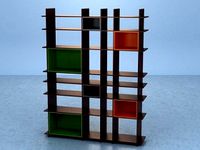
Level
...level
designconnected
zanotta level shelves and storage computer generated 3d model. designed by arik levy.
turbosquid
$1

level
... available on turbo squid, the world's leading provider of digital 3d models for visualization, films, television, and games.
3d_export
$5
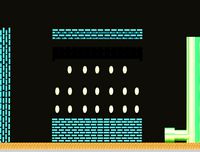
Mario level
...mario level
3dexport
mario level low quality for fun videos
3ddd
$1
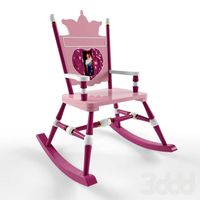
LEVELS OF DISCOVERY
...етская мебель "levels of discovery". rab10003 princess mini rocker
кресло-качалка (мини) "принцесса навсегда"
3d_export
$19
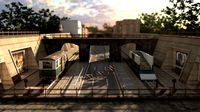
level design
...level design
3dexport
you can use this design (level design) in your own game.
turbosquid
$60
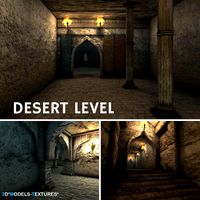
Desert level
...squid
royalty free 3d model desert level for download as fbx on turbosquid: 3d models for games, architecture, videos. (1208131)
turbosquid
$15

Transit Level
...quid
royalty free 3d model transit level for download as max on turbosquid: 3d models for games, architecture, videos. (1158112)
turbosquid
$14

Districts Level
...id
royalty free 3d model districts level for download as max on turbosquid: 3d models for games, architecture, videos. (1408410)
turbosquid
$3

Level Ball
...
royalty free 3d model level ball for download as ma and obj on turbosquid: 3d models for games, architecture, videos. (1515558)
Assembly
3d_export
$7

Electronic product assembly machine assembly machine
...electronic product assembly machine assembly machine
3dexport
electronic product assembly machine assembly machine
3d_export
$15
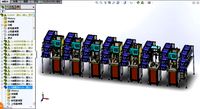
generator assembly line
...ced and assembled in the form of module block. it is a demonstration project of generator assembly. welcome to download and learn
3d_export
$10

elevator traction machine assembly line motor assembly process
... traction machine assembly line motor assembly process
3dexport
elevator traction machine assembly line (motor assembly process)
3d_export
$16
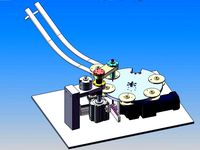
pin assembly machine
...pin assembly machine
3dexport
pin assembly machine
3d_export
$7
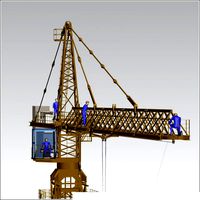
tower-crane-assembly
...tower-crane-assembly
3dexport
tower-crane-assembly
turbosquid
$100
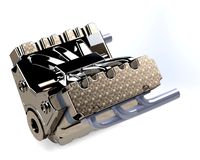
Engine Assembly
...id
royalty free 3d model engine assembly for download as stl on turbosquid: 3d models for games, architecture, videos. (1658296)
turbosquid
$100

Engine Assembly
...id
royalty free 3d model engine assembly for download as stl on turbosquid: 3d models for games, architecture, videos. (1658293)
turbosquid
$100

Engine Assembly
...id
royalty free 3d model engine assembly for download as stl on turbosquid: 3d models for games, architecture, videos. (1658291)
turbosquid
$75
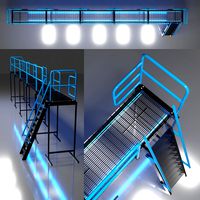
Platform Assembly
...royalty free 3d model platform assembly for download as blend on turbosquid: 3d models for games, architecture, videos. (1472939)
turbosquid
$15

generator assembly
...y free 3d model generator assembly for download as and sldas on turbosquid: 3d models for games, architecture, videos. (1469469)
Head
3d_export
$5

head
...head
3dexport
simulated female head.
3d_ocean
$5
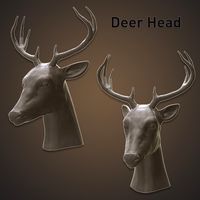
Deer Head
...deer head
3docean
deer head
simple model of deer head with neck.
cg_studio
$25
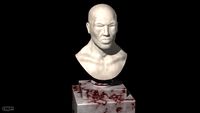
Marble Head - Head A3d model
... - head a3d model
cgstudio
.ma - marble head - head a 3d model, royalty free license available, instant download after purchase.
turbosquid
$5
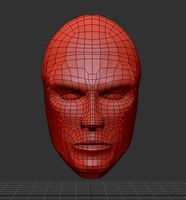
Head
...ad
turbosquid
royalty free 3d model head for download as max on turbosquid: 3d models for games, architecture, videos. (1230068)
turbosquid
free

The Head
...urbosquid
royalty free 3d model the head for download as max on turbosquid: 3d models for games, architecture, videos. (1386205)
turbosquid
free

Head
...
turbosquid
royalty free 3d model head for download as blend on turbosquid: 3d models for games, architecture, videos. (1276899)
3d_export
$10

bull head
...bull head
3dexport
bull head
3d_export
$5
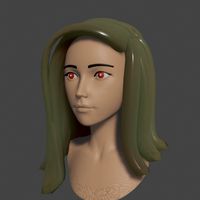
girl head
...girl head
3dexport
head girl
3d_export
$5
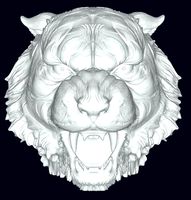
Tigger-head
...tigger-head
3dexport
tigger-head
3d_export
$5

head on a spear
...head on a spear
3dexport
head on a spear
Mount
3d_export
free
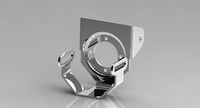
mounting bracket
...mounting plate is the portion of a hinge that attaches to the wood. mounting plates can be used indoors, cabinetry and furniture.
turbosquid
$2
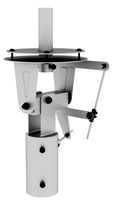
MOUNTING
... available on turbo squid, the world's leading provider of digital 3d models for visualization, films, television, and games.
turbosquid
free
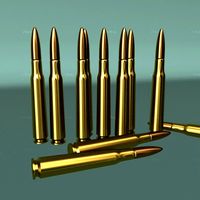
Mounts
... available on turbo squid, the world's leading provider of digital 3d models for visualization, films, television, and games.
turbosquid
free
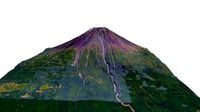
Mount Fuji
...fuji
turbosquid
free 3d model mount fuji for download as obj on turbosquid: 3d models for games, architecture, videos. (1579977)
3d_export
$5
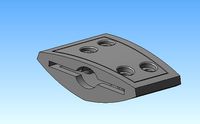
Headphone mount LR
...headphone mount lr
3dexport
headphone mount l+r
turbosquid
$39
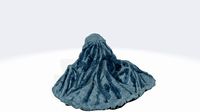
Mount rainier
...quid
royalty free 3d model mount rainier for download as fbx on turbosquid: 3d models for games, architecture, videos. (1492586)
turbosquid
$5
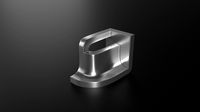
pipe mounting
...quid
royalty free 3d model pipe mounting for download as obj on turbosquid: 3d models for games, architecture, videos. (1293744)
turbosquid
$3

Mounting Tires
...uid
royalty free 3d model mounting tires for download as fbx on turbosquid: 3d models for games, architecture, videos. (1708511)
3d_export
$5
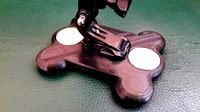
Magnetic GoPro Mount
...pro mount
3dexport
cool magnetic mount for gopro. allows you to mount the camera on flat metal surfaces and get exclusive shots.
turbosquid
$5
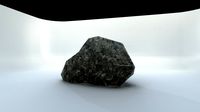
Stone Mount
...ty free 3d model stone mount for download as ma, obj, and fbx on turbosquid: 3d models for games, architecture, videos. (1370306)
